
Roots
Consider for a moment the quiet strength of a well-tended strand, the way light catches its surface, the spring in its coil. For generations uncounted, across lands warmed by sun and winds, the art of hair oiling has been a whisper passed down, a gesture of care deeply rooted in the rhythms of daily life. It is more than a simple application; it is a connection to ancestral wisdom, a recognition of hair not merely as adornment, but as a living part of our being, deserving of profound attention. This gentle tradition, seemingly simple, holds within its embrace a surprising depth of understanding that modern science is now beginning to articulate with precision.
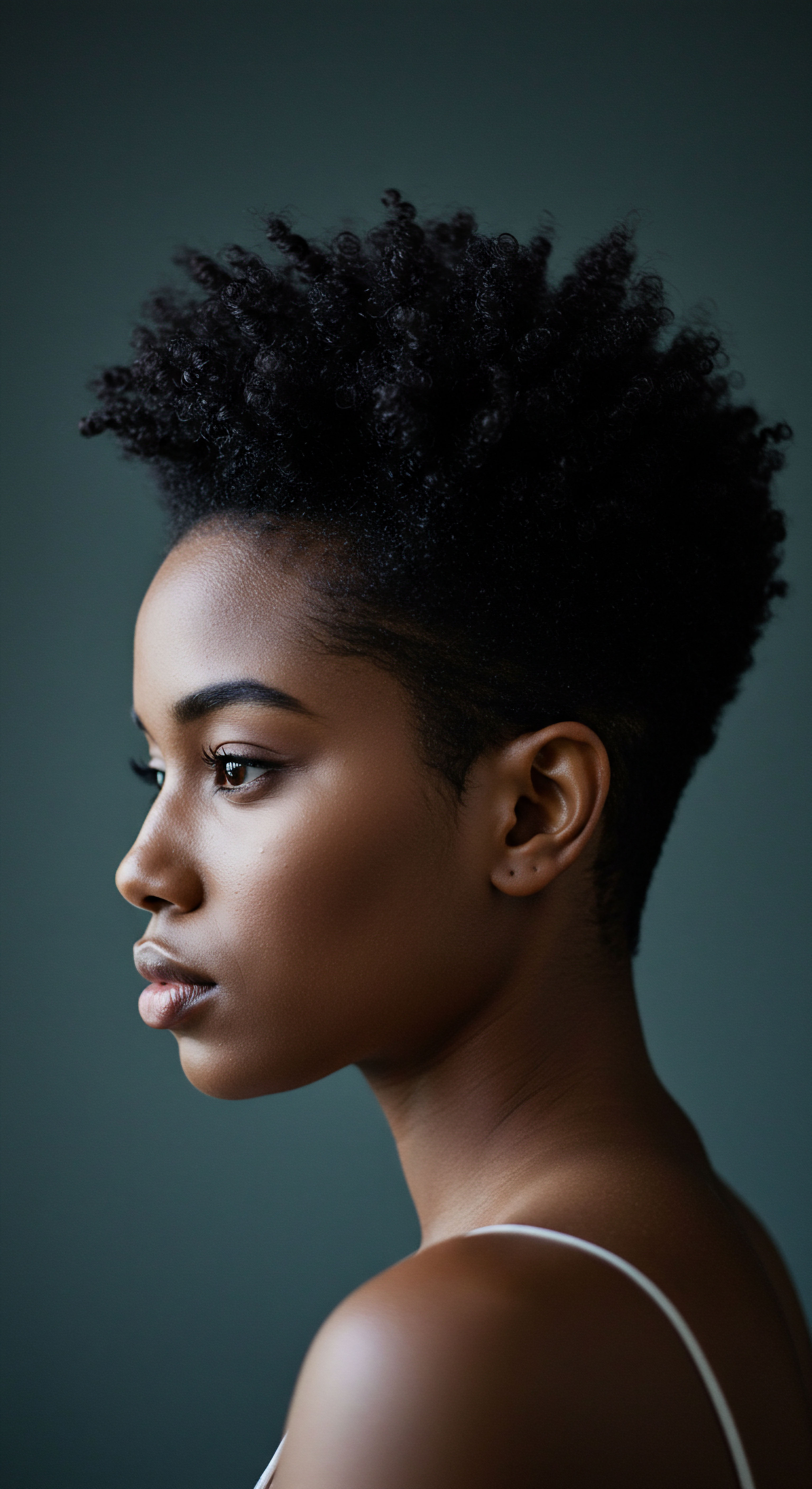
Hair Anatomy and Physiology
Our hair, at its very core, is a complex protein structure, primarily composed of keratin. This remarkable protein, also forming our nails and the hooves of animals, offers impressive resilience against daily wear. A single hair shaft reveals a sophisticated layering ❉ the outermost layer, the Cuticle, resembles overlapping scales, much like a fish or roof tiles, positioned downwards. A healthy cuticle presents a smooth, flat surface, reflecting light and guarding the inner regions from harm.
This outer shield also helps regulate moisture movement, maintaining hydration and flexibility. Beneath this protective layer lies the Cortex, which constitutes the bulk of the hair. It comprises long keratin filaments, held together by strong disulfide and hydrogen bonds. The health of the cortex depends significantly on the integrity of the cuticle that surrounds it. The innermost layer, the Medulla, appears in thicker hair types as a soft, transparent core of cells and air spaces.
The scalp, the living ground from which our hair grows, houses thousands of hair follicles, each a tiny organ capable of producing a single strand. The condition of the scalp directly influences the vitality of the hair emerging from it. A well-nourished, balanced scalp provides the optimal environment for hair to flourish.

Textured Hair Classification Systems
Textured hair, particularly that of Black and mixed-race individuals, presents a stunning array of patterns and densities. These diverse curl formations range from loose waves to tightly coiled strands. While no single system perfectly captures the full spectrum, classification helps us discuss and understand the unique characteristics and needs of various hair types.
Common systems categorize hair based on its curl pattern, often using a numbering system (e.g. 3A, 4C) to describe the degree of curl, from wavy to coily.
Understanding these classifications is not about rigid boxes, but about recognizing the distinct structural attributes that influence how products interact with the hair and how moisture is retained or lost. Coily hair, for instance, with its numerous bends and turns, tends to be more prone to dryness due to the difficulty of natural scalp oils traveling down the hair shaft.
Ancient hair oiling traditions, rooted in cultural practices, find contemporary validation through scientific understanding of hair’s complex protein structure and diverse needs.

The Essential Lexicon of Textured Hair
To truly understand and care for textured hair, a precise vocabulary becomes a helpful guide. Terms like Porosity refer to the hair’s ability to absorb and retain moisture, influenced by the cuticle’s condition. High porosity hair, with a raised or damaged cuticle, readily absorbs water but also loses it quickly. Low porosity hair, with a tightly closed cuticle, resists water penetration but retains moisture well once absorbed.
Density describes the number of individual hair strands on the scalp, while Strand Thickness refers to the diameter of a single hair. Knowing these individual characteristics allows for a more tailored approach to hair care, moving beyond generic advice to practices that truly support each unique head of hair.

Hair Growth Cycles and Influencing Factors
Hair growth follows a cyclical pattern, not a continuous one. This cycle consists of three main phases ❉
- Anagen Phase ❉ This is the active growth period, lasting from two to seven years. During this time, hair cells rapidly divide, leading to continuous hair lengthening.
- Catagen Phase ❉ A short transitional period, typically lasting a few weeks, where hair growth ceases and the follicle shrinks.
- Telogen Phase ❉ The resting phase, lasting a few months, before the hair is shed. A new hair begins to grow in the follicle, pushing out the old one.
Various factors can influence this cycle, including genetics, nutrition, stress, hormonal changes, and overall health. A balanced diet, rich in essential fatty acids like omega-3 and omega-6, plays a significant role in maintaining scalp health and supporting healthy hair growth. Deficiencies in these fatty acids, or certain minerals and vitamins, can impact hair health and even contribute to hair loss. Ancient oiling traditions, often involving oils rich in these beneficial compounds, inherently supported these physiological processes, even without explicit scientific terminology.
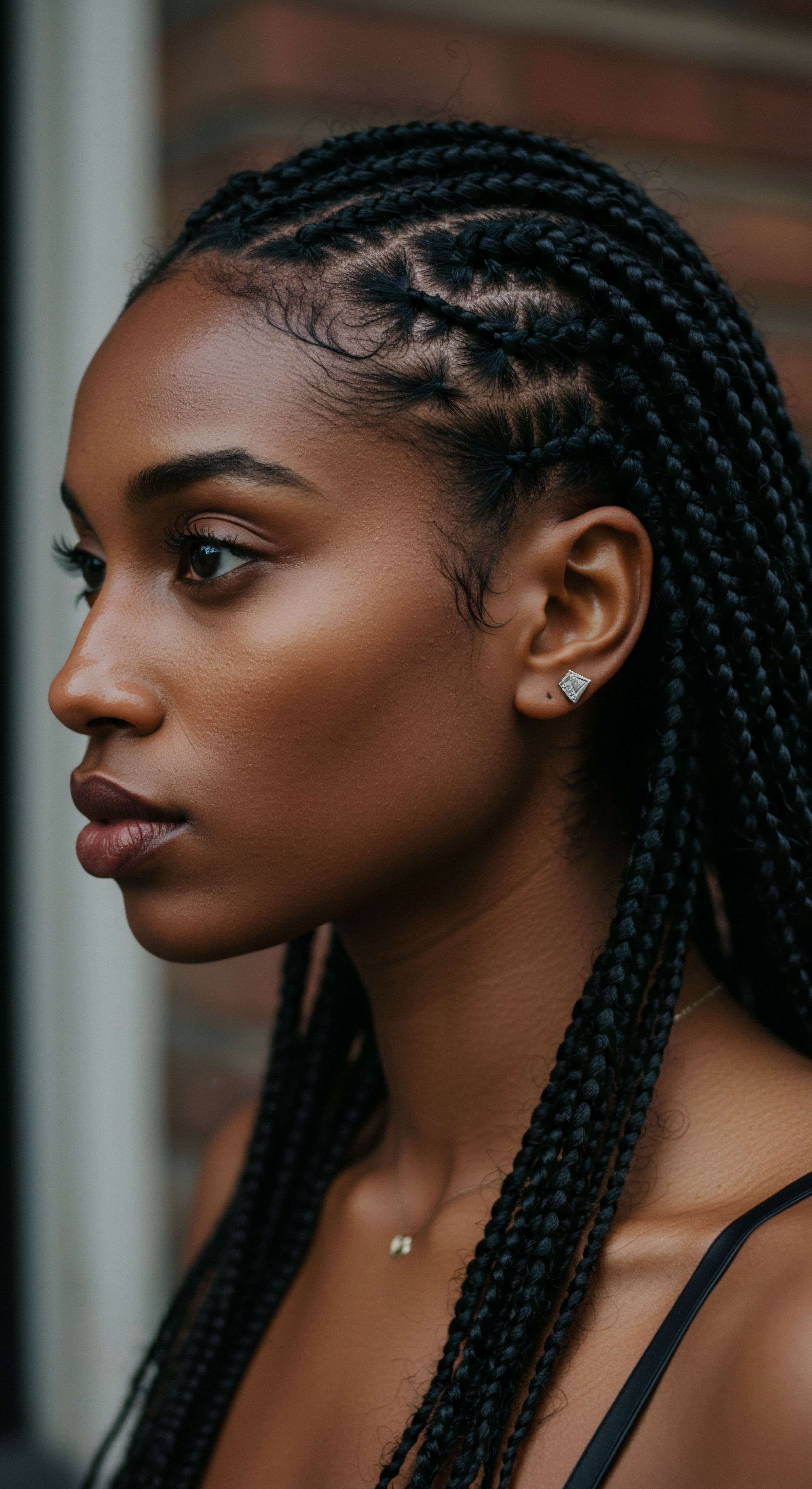
Ritual
Stepping from the quiet wisdom of hair’s fundamental nature, we turn now to the living practices that have graced hands and strands for centuries. The application of oils, once a simple gesture of care, becomes a deliberate ritual, a thoughtful act that nourishes and protects. This is where ancient understanding meets daily practice, where the tactile experience of tending to one’s hair takes on a deeper meaning. It is in these moments of methodical care that we see the bridge between time-honored techniques and the tangible benefits that modern hair science now explains.

Protective Styling Encyclopedia
Protective styles, such as braids, twists, and cornrows, have long been a cornerstone of textured hair care across cultures. These styles minimize manipulation, shield hair from environmental stressors, and help retain length. Ancient oiling traditions often preceded or accompanied the creation of these styles, preparing the hair and scalp for prolonged periods of rest and protection. The oils provided a slip that eased the styling process, reducing friction and potential breakage.
From the intricate patterns of African cornrows, which served not only as aesthetic expression but also as practical hair management and symbols of identity and lineage, to the structured elegance seen in other global traditions, protective styles offer a sanctuary for strands. The application of oils before braiding, for instance, seals moisture into the hair shaft, creating a barrier against dryness and external elements. This practice, intuitively understood in ancient times, finds scientific backing in the way oils, particularly those with smaller molecular structures like coconut oil, can penetrate the hair cortex and reduce protein loss.
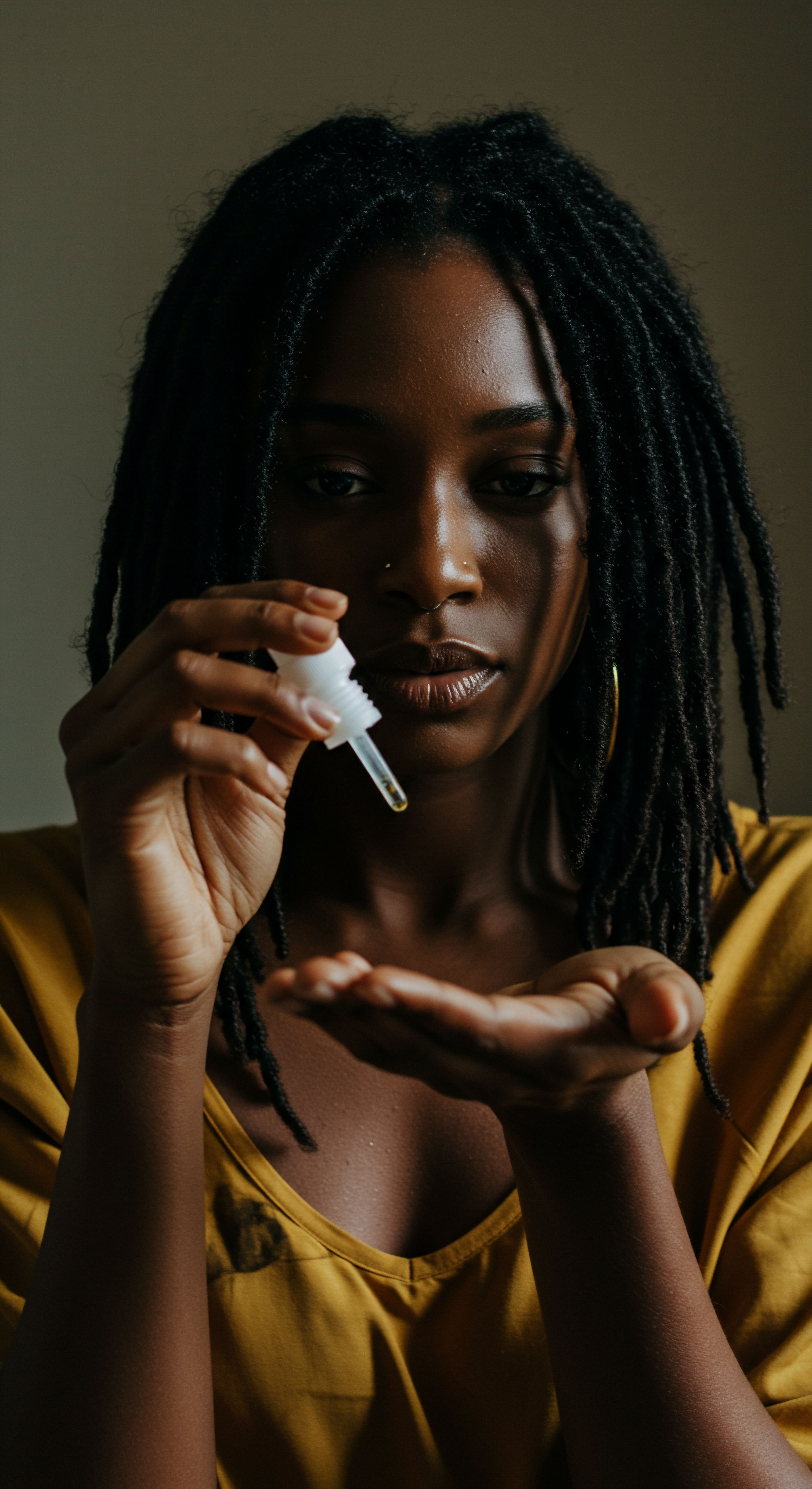
Natural Styling and Definition Techniques
The beauty of natural texture lies in its unique shape and form. Oiling plays a pivotal role in defining these patterns, whether through wash-and-go methods or twist-outs and braid-outs. When applied to damp hair, oils can help clump curls, enhancing their natural definition and reducing frizz. They also impart a healthy sheen, making the hair appear vibrant and well-cared for.
Traditional methods often involved specific oils chosen for their weight and conditioning properties, allowing the hair to settle into its inherent pattern without becoming heavy or greasy. The gentle hand motions associated with oil application also stimulated the scalp, encouraging blood flow and distributing natural sebum, further supporting hair health.
The careful, repeated gestures of ancient hair oiling, whether preparing for protective styles or defining natural texture, directly correlate with modern understandings of hair protection and moisture retention.
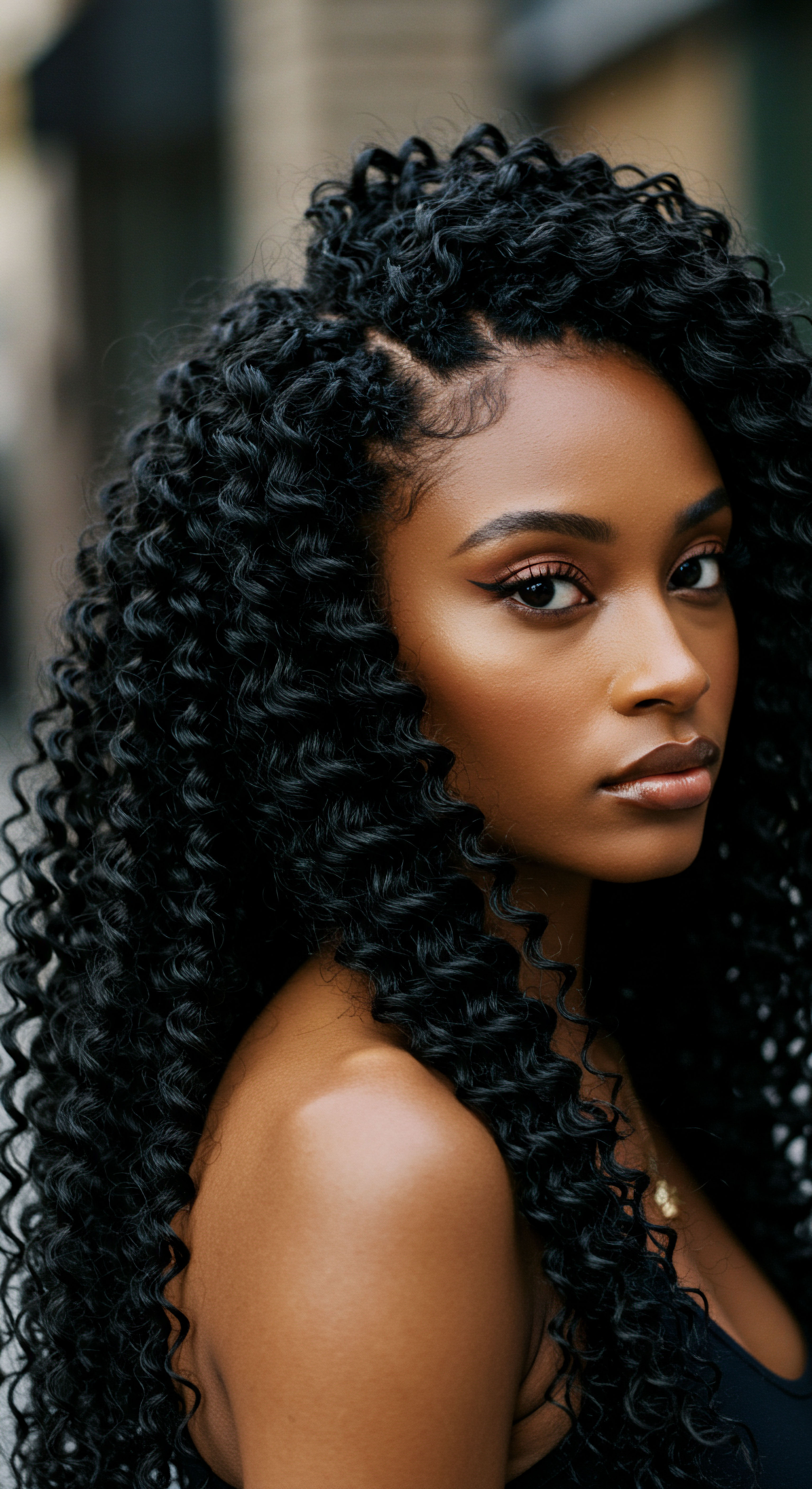
Wigs and Hair Extensions Mastery
While not directly “oiling” the extensions themselves in the same way, the scalp and natural hair beneath wigs and extensions require diligent care, including regular oiling. This prevents dryness, itching, and potential damage to the underlying hair. Ancient cultures utilized various forms of hair adornment, and the principles of scalp care remained constant.
Oils would be applied to the scalp to maintain its health and to condition the hair that was braided or gathered underneath. This foundational care ensured the longevity of the natural hair and comfort during periods of extended styling.
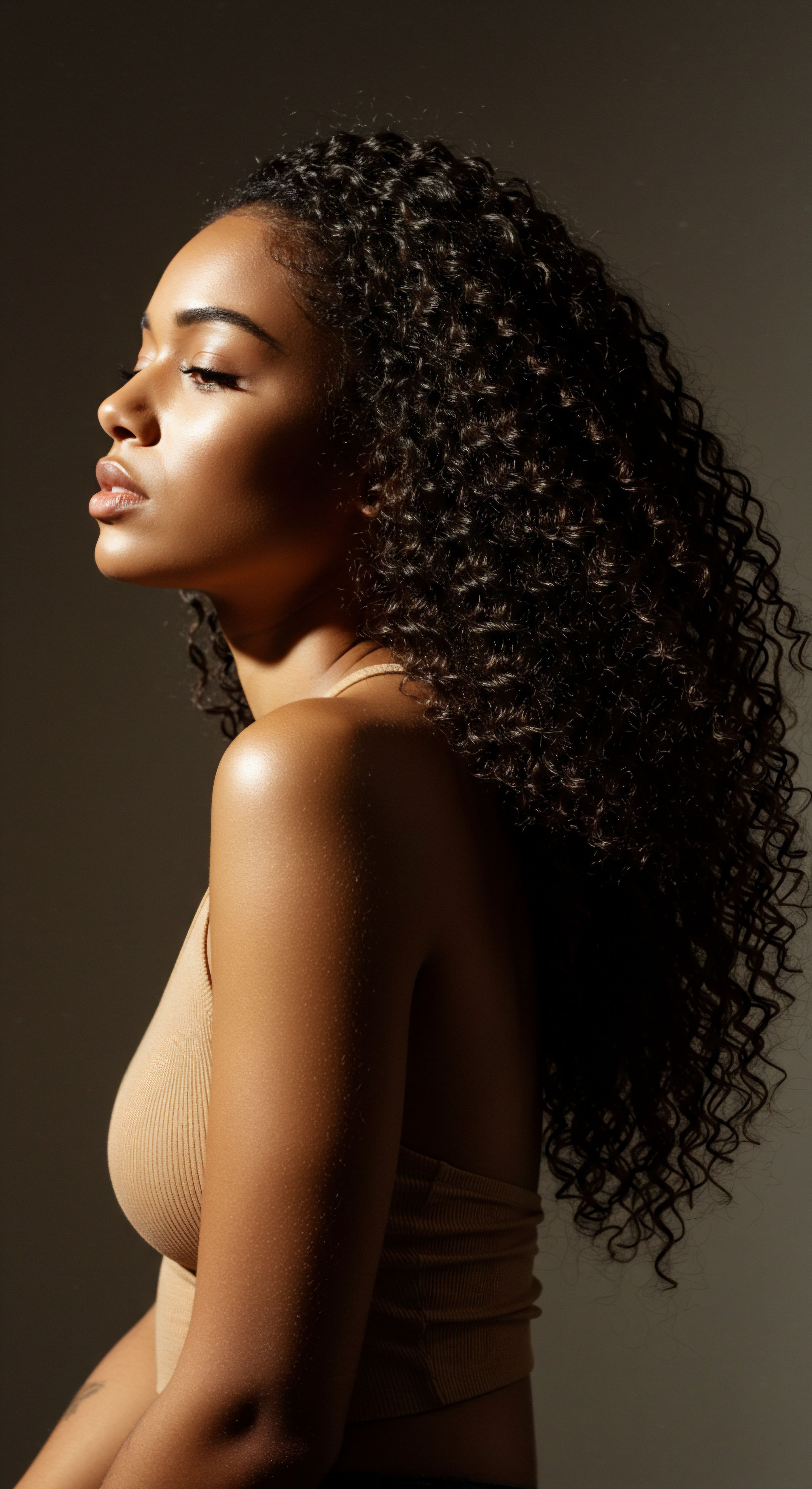
Heat Styling and Thermal Reconditioning
In contemporary hair care, heat styling tools are common, and the role of oils shifts to one of protection. While ancient traditions did not feature electric heat tools, the use of warmed oils or exposure to natural heat sources (like the sun) was not uncommon. Today, certain oils act as thermal protectants, creating a barrier that reduces direct heat damage to the hair shaft. They can help distribute heat more evenly and minimize moisture loss during styling.
The application of a lightweight oil before using a blow dryer or flat iron can help smooth the cuticle, reducing friction and leaving the hair with a polished finish. This modern adaptation of oil use still carries the underlying principle of preservation and care that has been present for centuries.

The Complete Textured Hair Toolkit
A comprehensive toolkit for textured hair extends beyond combs and brushes to include a selection of oils, chosen for their specific properties. From the deep penetration of Coconut Oil, known for its ability to reduce protein loss and protect against hygral fatigue (damage from repeated swelling and drying), to the scalp-soothing attributes of Sesame Oil, or the hair growth stimulating effects of Amla Oil, each oil offers distinct benefits.
A typical textured hair care toolkit might include ❉
- Wide-Tooth Comb ❉ Essential for detangling hair gently, especially when coated with oil.
- Applicator Bottle ❉ For precise distribution of oils to the scalp.
- Microfiber Towel ❉ Reduces friction and frizz compared to traditional terry cloth.
- Satin or Silk Scarf/Bonnet ❉ Protects hair overnight, minimizing friction and moisture loss.
- A Selection of Hair Oils ❉ Varying in weight and purpose, such as coconut, jojoba, or argan.
The conscious selection and application of these tools and products, guided by an understanding of hair’s unique needs, mirrors the intentionality of ancient rituals, adapting timeless principles to modern living.

Relay
What truly lies beneath the surface of hair oiling, beyond its visible benefits and comforting touch? How does the wisdom of our ancestors, steeped in botanical lore and generations of observation, align with the intricate mechanisms revealed by contemporary scientific inquiry? This exploration takes us deeper, seeking to connect the intuitive gestures of tradition with the precise language of chemistry and biology, uncovering the profound interplay between cultural practice and the very fabric of hair health.
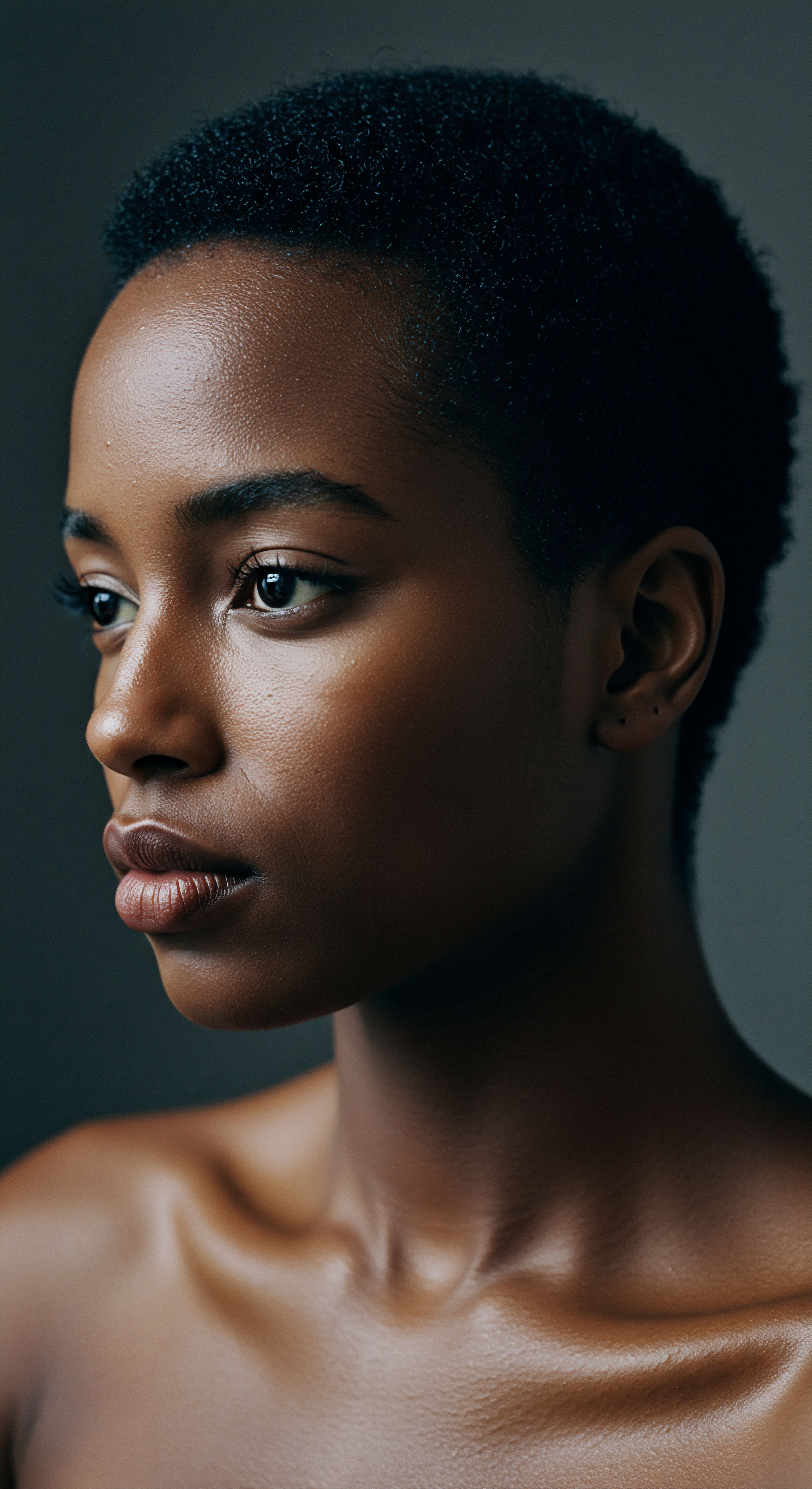
Building Personalized Textured Hair Regimens
A truly effective hair care regimen for textured strands is never one-size-fits-all. It is a carefully calibrated sequence of steps, attuned to the unique characteristics of an individual’s hair porosity, density, and strand thickness, alongside their lifestyle and environmental factors. Ancient oiling traditions were inherently personalized; remedies and applications varied based on regional plants, seasonal changes, and individual needs observed over time. This adaptive spirit finds a parallel in modern trichology, which advocates for regimens that consider the hair’s specific requirements for moisture, protein, and scalp balance.
For instance, individuals with high porosity hair may find heavier oils more beneficial for sealing in moisture, while those with low porosity hair might opt for lighter oils to avoid product build-up. The frequency of oiling also varies, from daily scalp applications to weekly pre-shampoo treatments, all dependent on the hair’s response and environmental conditions. This bespoke approach, informed by both inherited wisdom and scientific insight, ensures that hair receives precisely what it requires to flourish.

The Nighttime Sanctuary Essential Sleep Protection and Bonnet Wisdom
The hours of sleep, often overlooked in hair care, present a significant opportunity for protection and rejuvenation. This is where the wisdom of traditions, particularly within textured hair communities, shines brightly. The use of satin or silk bonnets, scarves, and pillowcases is not merely a preference; it is a scientifically sound practice. These smooth fabrics reduce friction between hair strands and bedding, thereby minimizing breakage, frizz, and tangling.
Prior to donning a bonnet, a light application of oil can create a protective layer, locking in moisture and preparing the hair for the night. This ritual, passed down through generations, prevents the hair from drying out and becoming brittle overnight, preserving its delicate structure. The gentle compression offered by a bonnet can also help maintain curl patterns, reducing the need for excessive manipulation in the morning.

Ingredient Deep Dives for Textured Hair Needs
The oils used in ancient traditions were not chosen arbitrarily; they were selected for their perceived properties and availability. Modern science now provides a deeper understanding of the molecular composition of these oils and their specific interactions with hair and scalp.
- Coconut Oil ❉ Renowned for its unique ability to penetrate the hair shaft due to its small molecular size and linear fatty acid structure, primarily lauric acid. Studies have shown that coconut oil can reduce protein loss in both damaged and undamaged hair when used as a pre-wash treatment. This contrasts sharply with mineral oil, which primarily coats the hair surface without significant penetration.
- Sesame Oil ❉ Rich in fatty acids like oleic and palmitic acid, sesame oil offers moisturizing and nourishing actions. It also contains antioxidants such as sesamolinol and sesaminol, which help protect against oxidative stress. Research indicates its potential for stimulating hair growth and its antimicrobial properties, which may aid in scalp health.
- Amla Oil (Indian Gooseberry) ❉ A staple in Ayurvedic practice, amla oil is celebrated for its purported hair growth stimulating properties. Research suggests it may inhibit 5-alpha reductase, an enzyme linked to hair loss, and is rich in Vitamin C and other antioxidants. A study involving women with female androgenetic alopecia who consumed amla syrup orally showed a significant increase in the anagen-to-telogen ratio, indicating prolonged hair growth phase.
- Black Seed Oil (Nigella Sativa) ❉ This oil, with a history spanning over two millennia in traditional remedies, gains modern scientific interest for its active compound, thymoquinone (TQ). TQ exhibits anti-inflammatory, antioxidant, and antimicrobial properties. Clinical research suggests black seed oil can reduce hair fall and increase hair density, particularly in cases of telogen effluvium. A 2013 study found that 70% of women with telogen effluvium experienced improved hair density and thickness after three months of consistent use.
This scientific validation of traditional ingredients underscores the intuitive efficacy of ancient practices, providing a compelling bridge between historical use and contemporary understanding.

Textured Hair Problem Solving Compendium
Ancient oiling traditions often addressed common hair concerns with their herbal oil formulations. Dryness, breakage, and scalp irritation were met with specific oil blends. Today, we understand these issues through a scientific lens.
- Dryness and Brittleness ❉ Textured hair’s unique structure, with its twists and turns, makes it prone to dryness as natural scalp oils struggle to travel down the shaft. Oils act as emollients and occlusives, sealing in moisture and creating a protective film on the hair surface, thereby reducing water loss and increasing flexibility.
- Scalp Irritation and Dandruff ❉ Certain traditional oils, like sesame oil, possess antimicrobial and anti-inflammatory properties. This scientific understanding supports their traditional use for soothing irritated scalps and addressing conditions like dandruff, which can be caused by fungal or bacterial imbalances.
- Hair Loss and Thinning ❉ While ancient remedies often claimed to stimulate growth, modern research points to specific compounds within oils that can support the hair growth cycle and scalp health. The omega-3 and omega-6 fatty acids found in many plant oils, for example, are essential for maintaining a healthy scalp and hair, with deficiencies potentially contributing to hair loss.
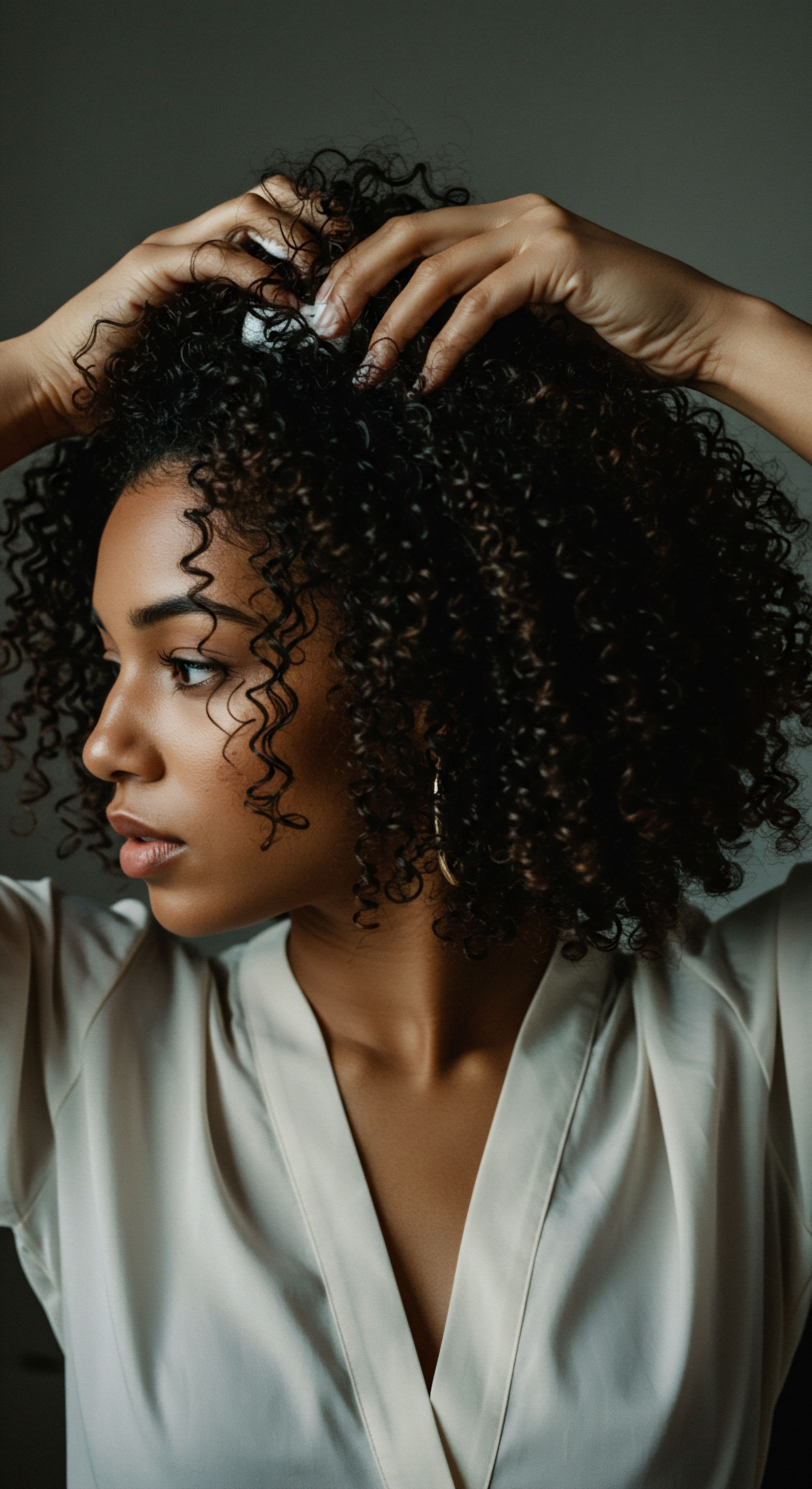
Holistic Influences on Hair Health
The connection between ancient hair oiling and modern science extends beyond direct chemical interactions. Traditional practices often viewed hair care as part of a larger wellness system, recognizing the influence of diet, stress, and mental well-being on physical health. This holistic perspective is increasingly echoed in contemporary health discourse.
A balanced diet, adequate hydration, and stress reduction are all acknowledged as contributors to vibrant hair. Oils, in their traditional application, were not just external treatments; the act of massaging the scalp itself was often a calming ritual, promoting relaxation and improved circulation. This gentle touch, combined with the nourishing properties of the oils, supported the overall health of the individual, which in turn reflected in the vitality of their hair. The ancient wisdom that connected the state of one’s hair to their inner balance finds its scientific echo in the physiological responses of the body to nutrition, stress, and systemic well-being.
The synergy between ancient oiling traditions and contemporary science highlights the precise molecular actions of botanical extracts on hair and scalp, validating centuries of intuitive practice.
| Traditional Oil Coconut Oil |
| Key Bioactive Components Lauric Acid, Myristic Acid, Palmitic Acid |
| Traditional Hair Benefits Reduces protein loss, conditions hair, adds shine. |
| Modern Scientific Validation Penetrates hair shaft, reduces protein loss (2, 10, 28, 29). |
| Traditional Oil Sesame Oil |
| Key Bioactive Components Oleic Acid, Linoleic Acid, Sesaminol, Sesaminol |
| Traditional Hair Benefits Hair growth, scalp health, anti-dandruff, anti-graying. |
| Modern Scientific Validation Antioxidant, antimicrobial, anti-inflammatory, potential hair growth (1, 4, 14, 32, 42). |
| Traditional Oil Amla Oil |
| Key Bioactive Components Vitamin C, Polyphenols, Linoleic Acid |
| Traditional Hair Benefits Hair growth, anti-graying, strengthens scalp. |
| Modern Scientific Validation Inhibits 5-alpha reductase, promotes anagen phase (13, 18, 19, 22, 23). |
| Traditional Oil Black Seed Oil |
| Key Bioactive Components Thymoquinone, Linoleic Acid, Oleic Acid |
| Traditional Hair Benefits Reduces hair fall, improves density, soothes scalp. |
| Modern Scientific Validation Anti-inflammatory, antioxidant, antimicrobial; significant improvement in hair density for telogen effluvium (3, 9, 11). |
| Traditional Oil This table shows how the traditional benefits of common hair oils align with specific scientific findings on their molecular actions and effects on hair and scalp. |
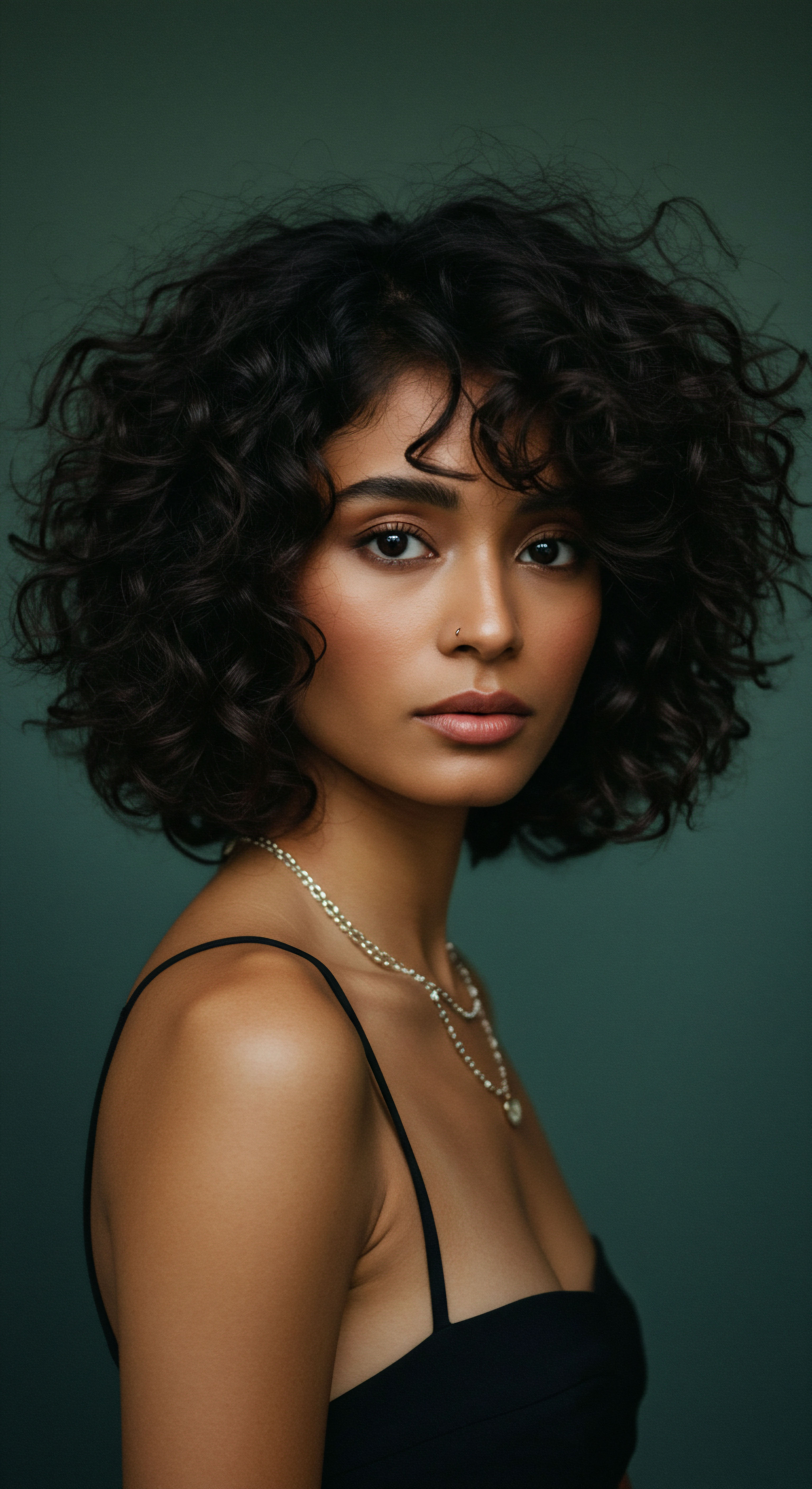
Reflection
As we consider the path from ancient oiling traditions to the nuanced insights of modern hair science, a profound understanding begins to settle. It is a quiet affirmation that the wisdom of generations, often expressed through simple, repeated gestures, held a truth that transcends mere observation. Our ancestors, through their intimate connection with the natural world and careful attention to the rhythms of life, cultivated practices that intuitively supported hair health. They understood the hair’s need for nourishment, protection, and gentle handling, even without microscopes or chemical analyses.
Today, scientific inquiry, with its precise tools and detailed investigations, provides the vocabulary and the evidence to explain what was once felt and known through experience. The penetration of lauric acid from coconut oil, the antioxidant properties of sesame, the enzyme inhibition by amla, and the anti-inflammatory action of black seed oil’s thymoquinone are not new discoveries of effect, but rather, articulations of ancient efficacy. This convergence offers a richer, more complete picture, inviting us to appreciate the depth of heritage while embracing the clarity of contemporary knowledge. It encourages a hair care philosophy that is both deeply personal and universally informed, celebrating the unique beauty of every strand, grounded in both timeless ritual and scientific understanding.
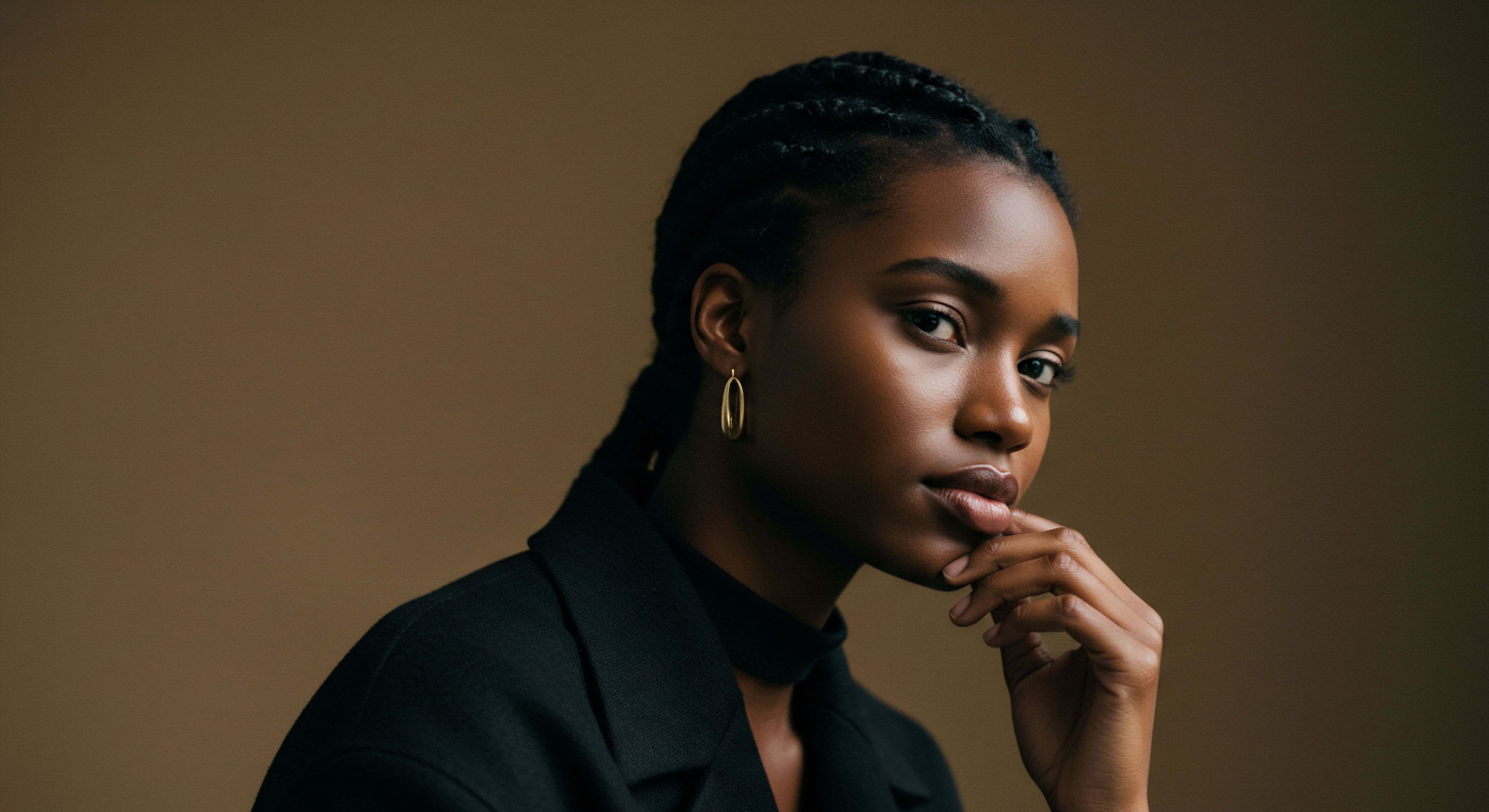
References
- Rele, A. S. & Mohile, R. B. (2003). Effect of mineral oil, sunflower oil, and coconut oil on prevention of hair damage. Journal of Cosmetic Science, 54(2), 175-192.
- Gode, V. Bhalla, N. Shirhatti, V. Mhaskar, S. & Kamath, Y. (2012). Quantitative measurement of the penetration of coconut oil into human hair using radiolabeled coconut oil. Journal of Cosmetic Science, 63(1), 27-31.
- Khatri, A. (2025). Roots of Haircare. Publifye. (ISBN ❉ 9788233959265)
- Sherrow, V. (2006). Encyclopedia of Hair ❉ A Cultural History. Greenwood Press. (ISBN ❉ 9780313331459)
- Robbins, C. R. (2012). Chemical and Physical Behavior of Human Hair (5th ed.). Springer. (ISBN ❉ 9781461421455)
- Martini, M. C. & Muller, J. (2018). Hair and Hair Care (Cosmetic Science and Technology). CRC Press. (ISBN ❉ 9781138096335)
- Wongrakpanich, S. et al. (2022). The effect of an oral product containing Amla fruit (Phyllanthus emblica L.) on female androgenetic alopecia. Natural Health Research, 1(1), 1-8.
- Ahmad, S. et al. (2013). Clinical efficacy of topical Nigella sativa for the treatment of telogen effluvium in women ❉ A controlled study. Journal of Cosmetics, Dermatological Sciences and Applications, 3(02), 70-75.
- Purwal, L. et al. (2008). Preparation, evaluation and hair growth stimulating activity of herbal hair oil. Journal of Chemical and Pharmaceutical Research, 1(1), 261-267.
- Jones, G. (2010). Beauty Imagined ❉ A History of the Global Beauty Industry. Oxford University Press. (ISBN ❉ 9780199609611)